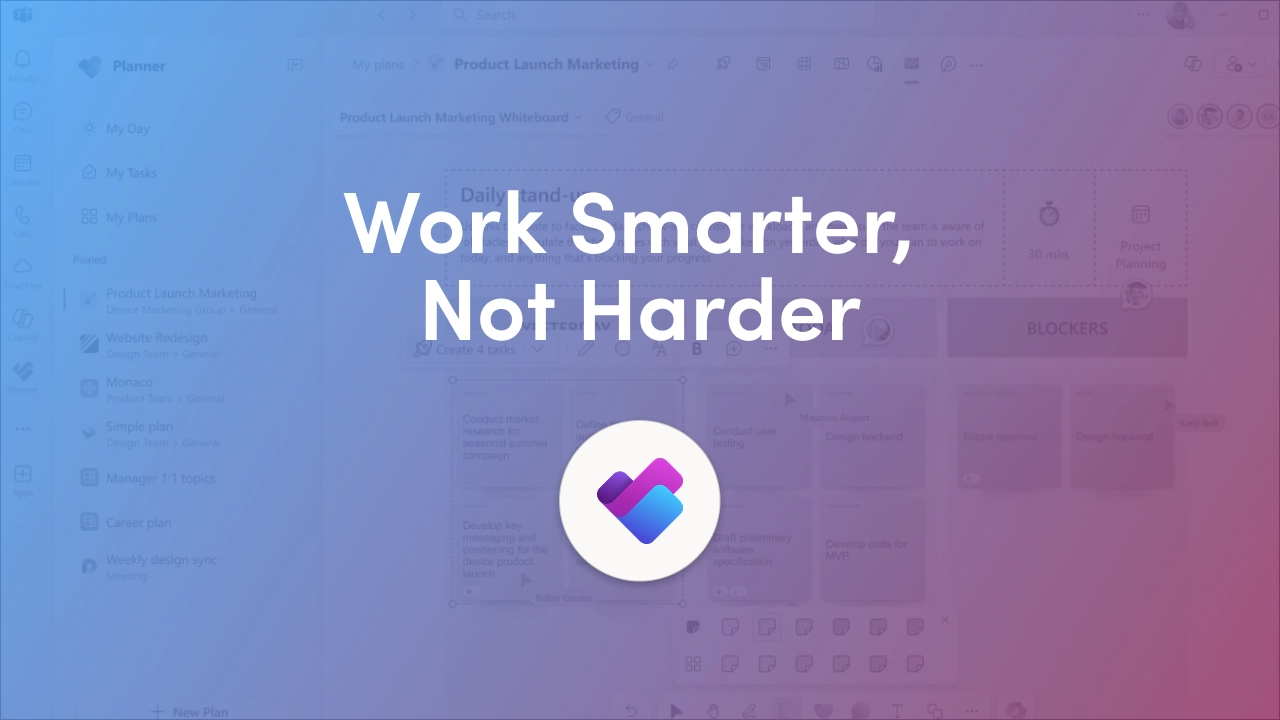
If you’re anything like me, you love the feeling of momentum — the moment a plan clicks into place and the team starts moving. But getting to that point is often the messy part: brainstorming, turning notes into tasks, assigning owners, and juggling follow-ups. Enter the Project Manager Agent in Microsoft Planner — the helpful little teammate that takes care of the tedious setup and upkeep so you can focus on the work that actually matters.
Below, We’ll walk through the top five, everyday ways the Project Manager Agent makes work smoother, with quick tips on how to use each one. I’ve written this from the perspective of someone who’s used Planner and wants practical wins — not theory.
Starting a project shouldn’t feel like staring at a blank canvas. Tell the agent a simple goal (for example, “Launch Q4 social campaign”), and it will generate a structured plan with tasks, buckets, and initial due dates. That first-draft plan gives you a usable starting point instead of an empty board — which slashes the time from idea to action.
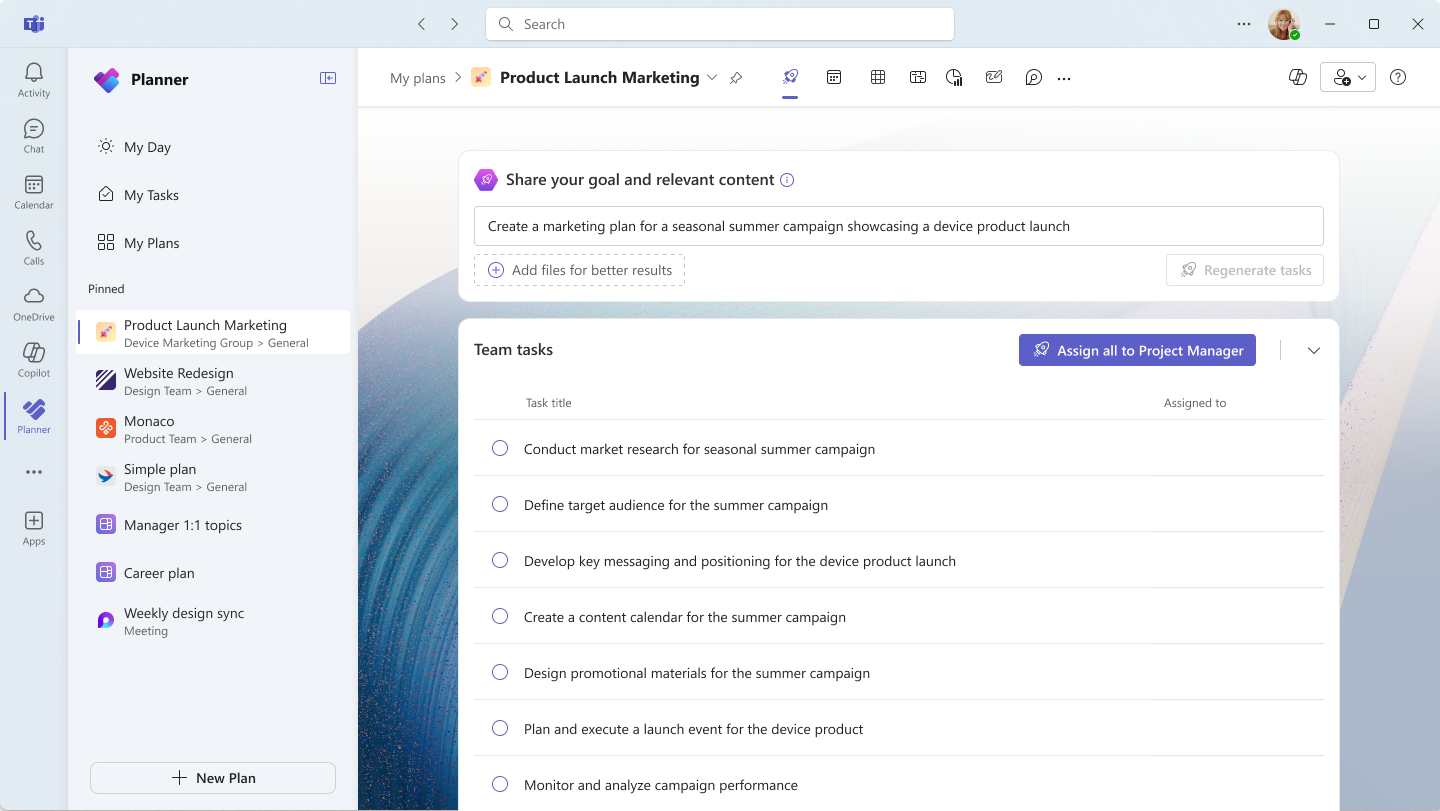
How I use it: I type a one-line brief, let the agent generate tasks, then edit the top 3 priorities and assign owners. That 10-minute setup saves hours of manual planning later.
Too many tools mean split attention. The Project Manager View gives you one hub to set goals, see who owns what, and monitor progress — all in one place. Because the agent’s tasks sync into Planner views and collaborative surfaces, everyone sees the same truth without dozens of clarifying emails. If you pin the Project Manager View in a Teams channel, it becomes the single place people check for updates.
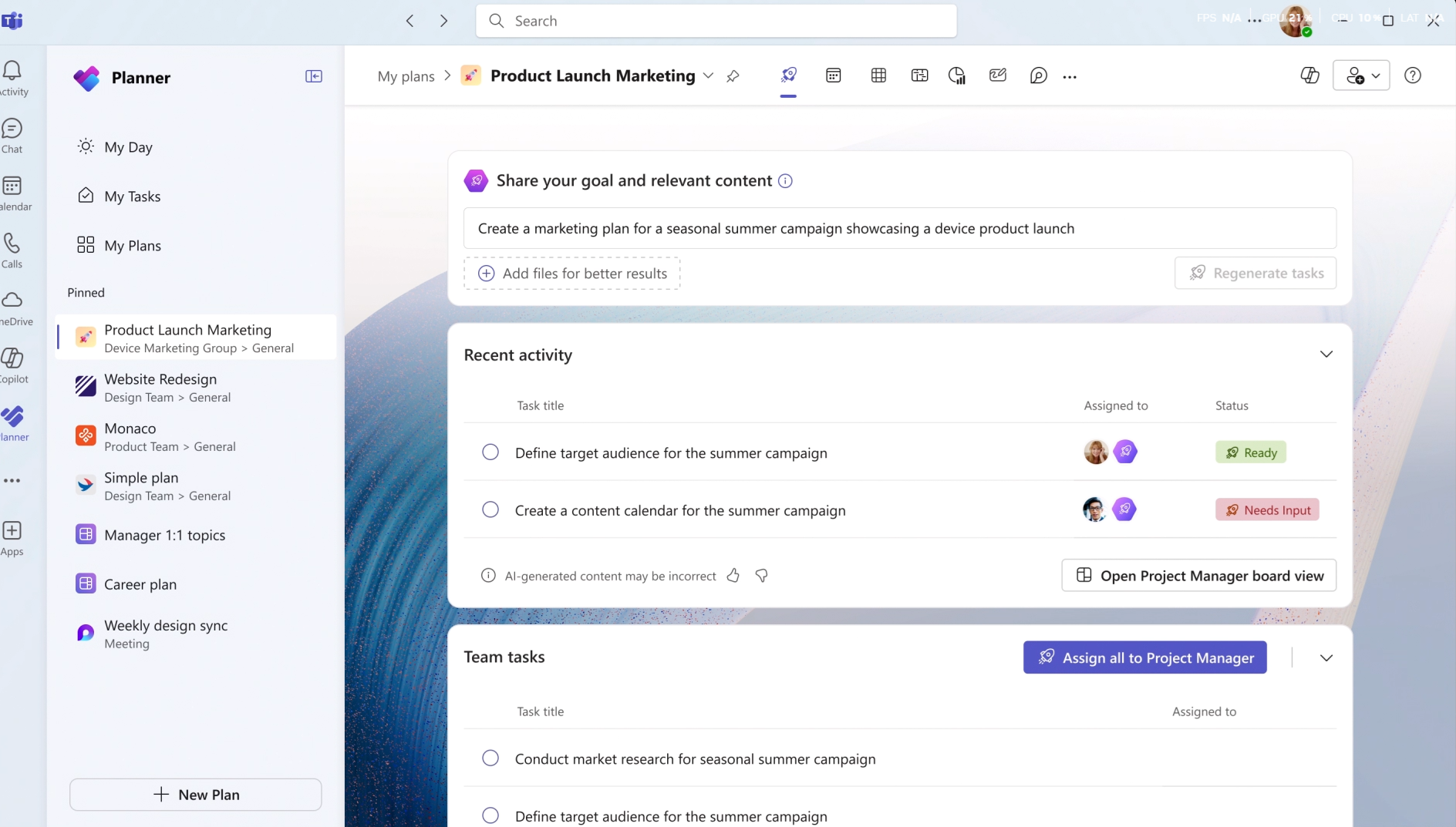
Small change, big impact: When a responsibility is clarified in that view, follow-up questions drop dramatically.
You know those whiteboard sessions where sticky notes pile up and the momentum fizzles afterwards? The agent integrates with Whiteboard and Loop so you can convert ideas into tasks in a click. That bridge between ideation and execution ensures great ideas don’t stay on sticky notes — they become assigned work with deadlines.

Tip: After a brainstorm, convert the top 5 sticky notes to tasks, ask the agent to structure them, and assign owners before wrapping the meeting.
Project upkeep is the slow leak of productivity: missed dependencies, forgotten reminders, or manual status updates. The Project Manager Agent can suggest and create sensible task dependencies, trigger follow-up tasks, and send notifications when action is needed. That means fewer status-meeting minutes and more actual progress.
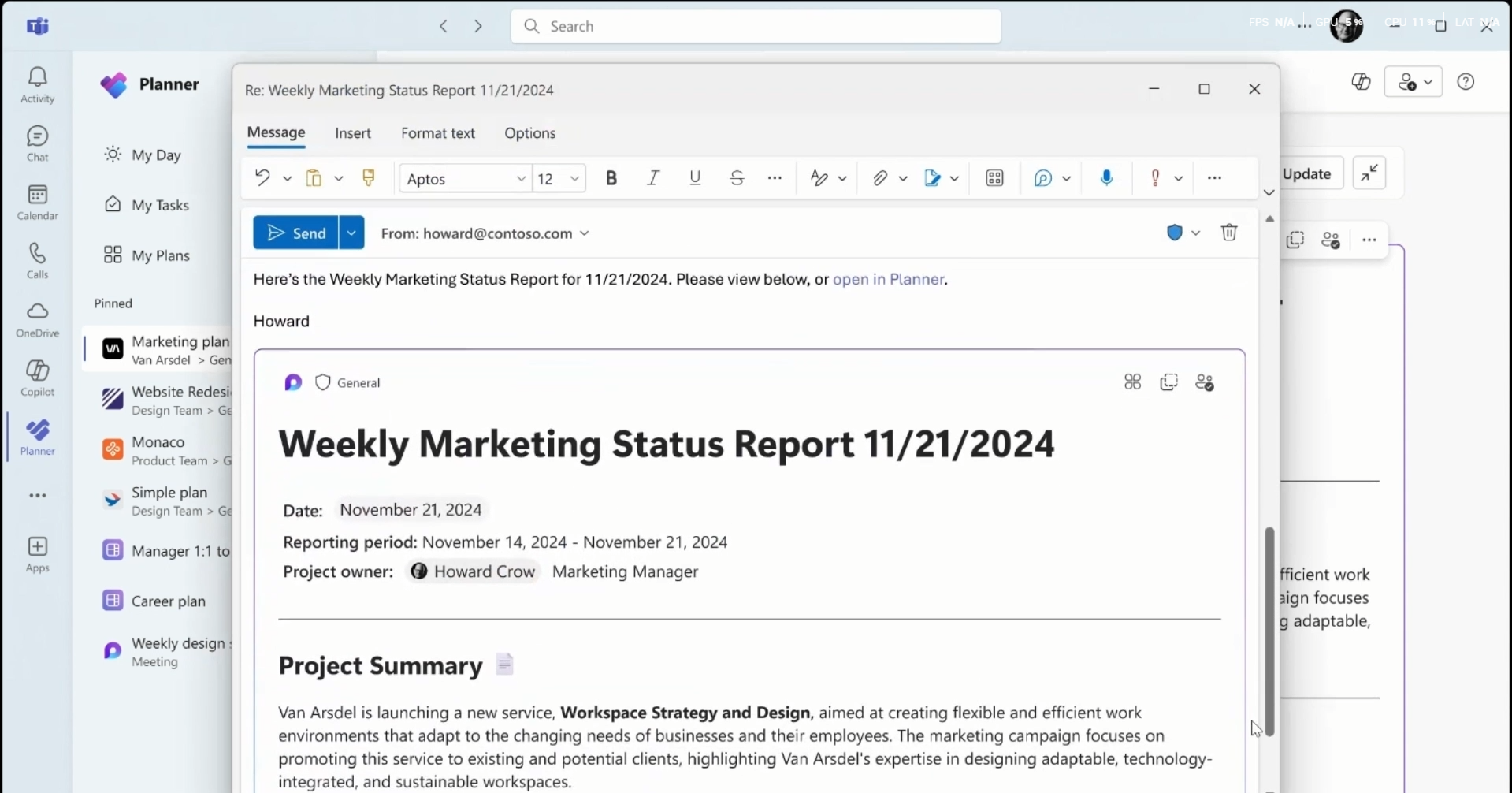
How to start: Turn on dependency suggestions and set routine milestone alerts. Let the agent create follow-ups when tasks finish so handoffs don’t stall.
For repetitive work — onboarding, campaign launches, releases — consistency matters. Use the agent to populate standardized templates and checklists so every project follows the same quality steps. Under the hood, multiple specialized agents coordinate to bring different perspectives (planning, execution, follow-up) to the table, which helps deliver dependable outputs across projects.
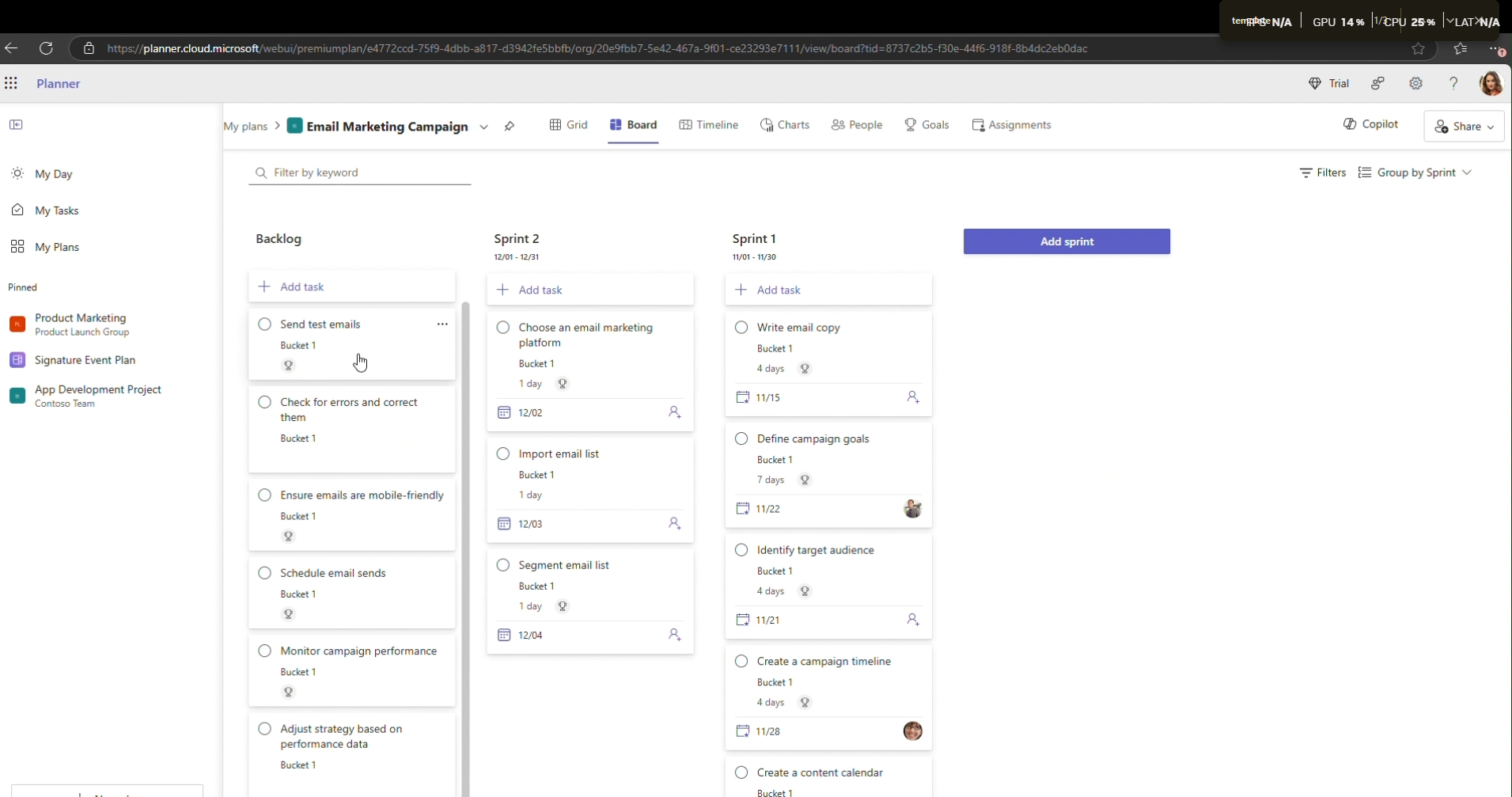
Why this helps: When every campaign follows the same template, reporting, audits, and handoffs become frictionless.
You’ll be surprised what a small upfront investment returns in saved time and fewer meetings.
The Project Manager Agent is not a replacement for leadership, judgment, or team relationships. Think of it as the person who handles the logistics so you can do the thinking. Use it to accelerate starts, reduce admin, and keep the team focused on impact. Over time, the agent helps create predictable, repeatable project patterns that actually make growth sustainable.
Join Our Mailing List